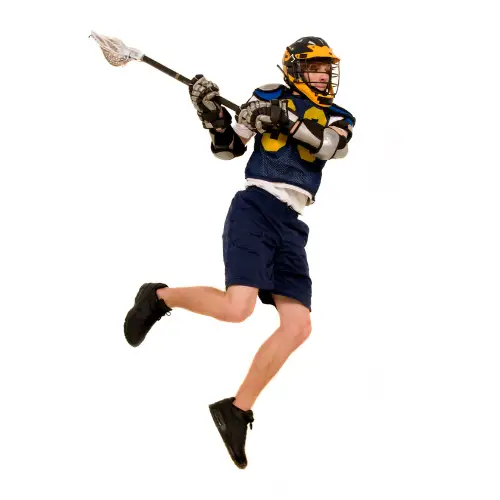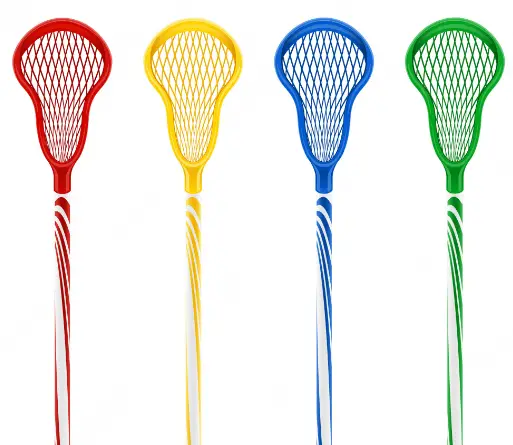Lacrosse is a fast-paced and exciting sport that requires a combination of skill, strength, and agility. One of the most essential elements of the game is the lacrosse stick, which is used to catch, throw, and shoot the ball. However, proper stick handling is not always intuitive, and it requires a combination of technique and practice to master. In this article, we will go over the basics of how to properly hold a lacrosse stick and provide tips on how to improve your stick skills. Whether you are a beginner or an experienced player, learning how to properly hold a lacrosse stick is an important step in becoming a successful athlete in this exciting sport.
What Are Different Types Of Lacrosse Sticks?
There are several different types of lacrosse sticks, including:
- Attack/Midfield Sticks: These sticks are designed for players who are offensively minded and typically play on the front line. They have a shorter and more flexible shaft, making it easier to handle and pass the ball.
- Defense Sticks: These sticks are designed for players who are defensively-minded and typically play on the back line. They have a longer and more rigid shaft, making it easier to check and disrupt the opposition’s attack.
- Goalie Sticks: These sticks are specifically designed for goalies and have a wider head to help catch and deflect the ball.
- Youth Sticks: These sticks are designed for younger players and have a shorter shaft and smaller head, making it easier for them to handle and control the ball.
- Women’s Sticks: These sticks have a shorter and more flexible shaft, and a smaller head size than men’s sticks, as the rules for women’s lacrosse, are slightly different.
- Traditional Sticks: These sticks are made of wood and use a leather pocket to hold the ball, rather than a mesh pocket like modern sticks. They are typically used in Native American and traditional lacrosse games.
What Are The Factors To Consider When Choosing A Lacrosse Stick?
There are several factors to consider when choosing a lacrosse stick, including:
Length: The length of a lacrosse stick is important because it determines the reach of the player. A shorter stick is better for quick, agile play, while a longer stick allows for greater reach and power.
Head Shape: The shape of the head on a lacrosse stick affects the ball control and catching ability of the player. A wider head allows for a larger pocket, making it easier to catch and hold the ball, while a narrower head allows for better ball control and shooting accuracy.
Pocket Depth: The depth of the pocket on a lacrosse stick determines how well the ball sits in the pocket. A deeper pocket allows for a more secure hold on the ball, while a shallower pocket allows for quicker release and better ball control.
Material: Lacrosse sticks are typically made of either metal or composite materials. Metal sticks are stronger and more durable, while composite sticks are lighter and more flexible.
Price: Lacrosse sticks can range in price from a few hundred dollars to over a thousand dollars. It’s important to consider your budget when choosing a stick.
Brand: Different brands offer different features and benefits in their lacrosse sticks. It’s important to research and compare different brands to find the one that best fits your needs.
Position: Different positions in lacrosse require different stick features. Attackers may prefer a stick with a narrower head and shallower pocket for quick release and accuracy, while defenders may prefer a stick with a wider head and deeper pocket for better ball control.
How To Hold A Lacrosse Stick: Step-by-step
Step 1: Begin by holding the lacrosse stick with your dominant hand on the top of the handle and your non-dominant hand on the bottom of the handle.
Step 2: Adjust your grip so that your dominant hand is slightly closer to the head of the stick and your non-dominant hand is slightly closer to the bottom of the handle. This will give you better control and balance.
Step 3: Position the stick in front of your body, with the head facing upwards towards the sky. The head of the stick should be slightly tilted towards your dominant hand.
Step 4: Make sure that your arms are relaxed and not too close to your body. This will give you a wider range of motion and allow you to move the stick more freely.
Step 5: Practice gripping the stick with different amounts of pressure to find what feels most comfortable and gives you the best control.
Step 6: When catching or throwing the ball, make sure to keep your grip on the stick loose and relaxed. This will allow you to easily adjust your grip as needed and make quick passes and catches.
Step 7: As you become more comfortable with your grip, try to shift your weight onto your dominant foot when catching or throwing the ball. This will give you more power and control over your shots and passes.
Step 8: Remember to always keep your head up and your eyes on the field when handling the stick. This will help you anticipate plays and make better decisions on the field.
Step 9: With practice and time, your grip on the lacrosse stick will become more comfortable and natural, allowing you to handle the ball with ease and control.
How To Improve Grip Strength And Control When Holding A Lacrosse Stick
- Use hand strengthening exercises: These exercises can help improve grip strength and control by strengthening the muscles in your hands and forearms. Some exercises include gripping a tennis ball or hand gripper, squeezing a foam ball, or doing finger curls with a small weight.
- Practice catching and throwing: Improving your catching and throwing skills will help you better control the lacrosse stick when handling the ball. Practice catching and throwing with a partner or against a wall to improve your control and accuracy.
- Use grip-strengthening products: There are various grip-strengthening products on the market, such as hand grippers or hand strengthener bands, that can help improve your grip strength and control.
- Use proper hand placement: Proper hand placement on the lacrosse stick is crucial for maintaining control. Make sure your hands are evenly spaced and positioned on the handle of the stick, with your fingers wrapped around the handle and your thumbs on the top of the stick.
- Use tape: Taping your stick handle can provide added grip and control. You can use hockey tape, grip tape, or even electrical tape to add a textured surface to the handle of your stick.
- Use grip wax: Grip wax is a sticky substance that you can apply to the handle of your stick to improve grip and control. Simply rub the wax on the handle and then wipe off the excess for a sticky, secure grip.
- Dry your hands: Wet hands can make it difficult to maintain a secure grip on the lacrosse stick. Make sure to dry your hands thoroughly before playing to improve your grip strength and control.
Conclusion
In conclusion, proper grip and hand placement on a lacrosse stick are crucial for success on the field. By properly holding the stick with the dominant hand on the top and the non-dominant hand on the bottom, players can have better control and power when throwing and catching the ball. It is important to also keep a relaxed grip, as a tight grip can lead to mistakes and decreased performance. By following these tips and practicing regularly, players can improve their lacrosse skills and become more confident in their game.







